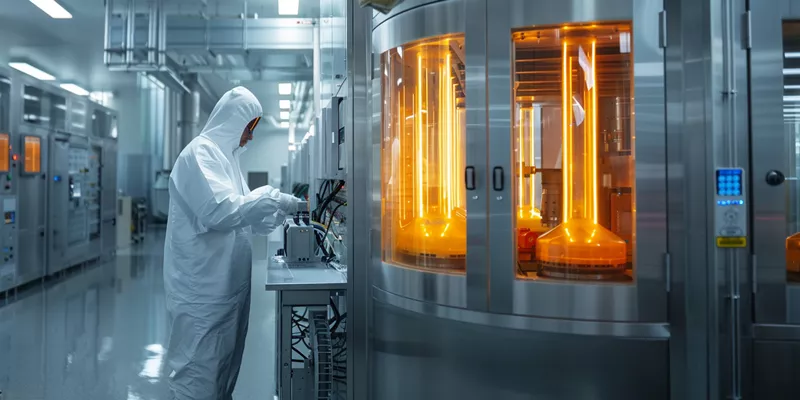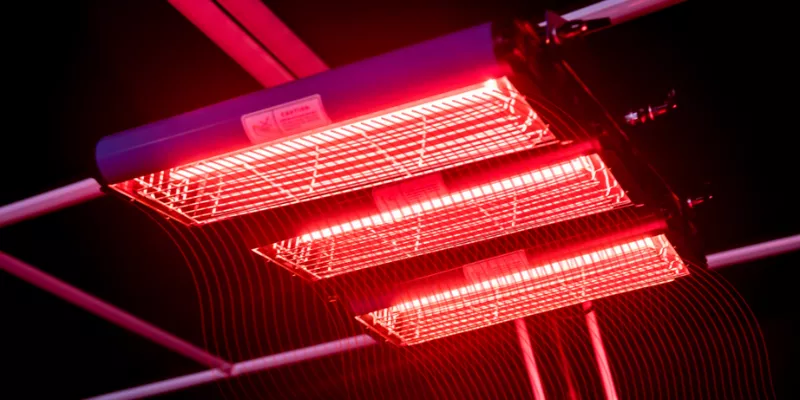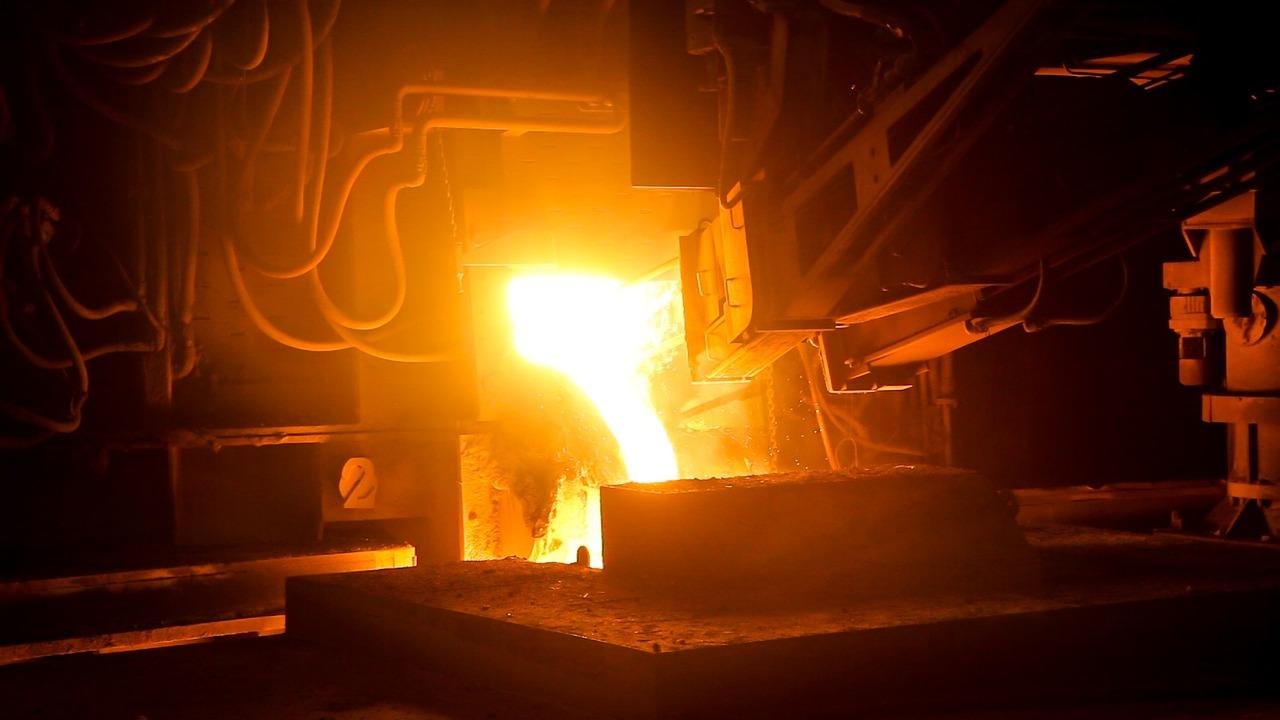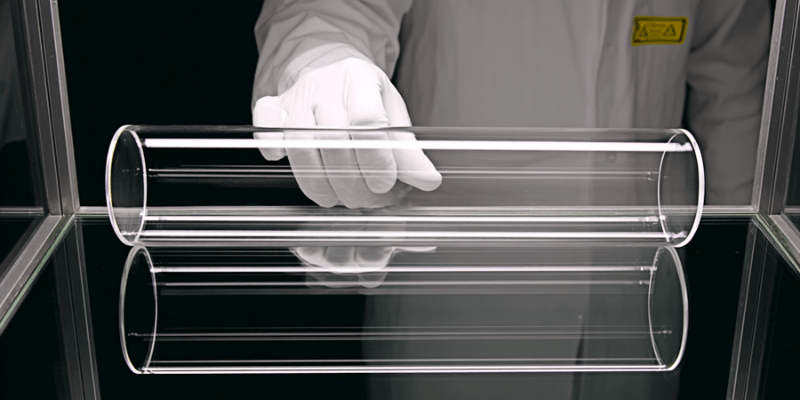Transparent quartz crucibles play a vital role in high-temperature crystal growth, chemical processing, and optical monitoring applications. Their design directly determines the precision and stability of thermal systems across semiconductor, metallurgy, and laboratory fields. Establishing standardized engineering specifications ensures that every crucible performs with predictable efficiency and durability under extreme environments.
This framework defines a structured correlation between optical transmission, wall thickness, and operational temperature. It integrates hydroxyl concentration, bubble classification, and thermal shock resilience into a measurable model aligned with SEMI, ASTM, and ISO industrial standards.

Abstract: Scope, Methods, and Key Findings
Transparent quartz crucibles represent a standardized category of fused silica containers used in high-precision thermal and optical systems. This section summarizes the study’s analytical scope, applied methodologies, and engineering conclusions. The goal is to demonstrate measurable repeatability through verified data and internationally recognized standards.
Matrix Definition, Process-Defect Link, and Acceptance Protocol
A comprehensive testing matrix links physical properties with optical and thermal outcomes. The experimental approach uses SEMI E172, ASTM E228, and ISO 9050 frameworks to evaluate performance metrics. Results confirm that when transmission and wall uniformity meet target ranges, product rejection rates drop below 2%.
The data also show that OH⁻ concentration gradients and bubble density are the most influential defect triggers in fused quartz crucibles. By maintaining gradients under 30 ppm and bubble class below B2, thermal shock resistance improves significantly. This verification forms the acceptance benchmark for compliant industrial production.
Ultimately, the combined parameter set enables consistent procurement and usage decisions. Key highlights include:
- Transmission–Thickness–Temperature Matrix ensures reproducibility.
- SEMI/ASTM Integration establishes quantifiable acceptance methods.
- OH⁻ and Bubble Class Control reduces crystallization and cracking incidents.
Structural Uniqueness of Fused Silica for Optical Monitoring
Transparent fused silica’s amorphous network gives it distinctive optical advantages. Its isotropic structure eliminates birefringence, making it ideal for in-situ monitoring of molten materials. The following subsections explore how its molecular design and hydroxyl control define its operational stability.
Amorphous SiO₂ Network and IR Attenuation Mechanisms
Fused silica lacks the long-range crystalline order of α-quartz, enabling consistent optical transmission without refractive interference. The primary source of IR attenuation arises from vibrational absorption bands and trace impurities. These impurities, usually below 50 ppm, can cause attenuation near 2.7 μm.
When the material is fabricated under controlled melting and annealing, internal scattering decreases by up to 20%. This uniformity ensures stable optical clarity even during prolonged high-temperature operations. Maintaining these attributes supports accurate real-time visualization in CZ silicon processes.
In summary, the microstructural design of fused silica delivers both visual and mechanical consistency. Notable advantages include:
- Low Impurity Concentration (<50 ppm) for enhanced transparency.
- Stable IR Transmission across extended heating cycles.
- Isotropic Amorphous Structure minimizing optical distortion.
Hydroxyl (OH⁻) Gradients and Crystallization Risk Control
Hydroxyl ions directly influence devitrification and bubble formation during melting. A high OH⁻ level (>200 ppm) promotes nucleation of cristobalite phases at elevated temperatures. Proper dehydration using plasma fusion reduces OH⁻ to less than 50 ppm, minimizing these risks.
Maintaining uniform OH⁻ gradients through controlled atmosphere annealing stabilizes internal stress and prevents localized phase transitions. As a result, the crucible can sustain 25% longer service life before visual hazing occurs. Quantitatively, samples with OH⁻ below 50 ppm show zero structural cracks after 50 cycles at 1450 °C.
Therefore, regulating hydroxyl distribution directly improves product reliability and lifespan. Key process controls include:
- Plasma Dehydration (<50 ppm OH⁻) for purity stabilization.
- Gradient Uniformity ≤30 ppm across wall thickness.
- Enhanced Life Span (+25%) by preventing devitrification.
Core Performance Matrix: Transmission, Thermal Stability, Chemical Inertness
This section defines the measurable parameters governing transparent quartz crucible performance. It integrates optical transmission, thermal stability, and chemical resistance into a unified verification protocol. Each property is traceable to international testing methods.
UV–NIR (190–3500 nm) Transmission vs. Thickness (ISO 9050 Reference)
Transmission measurements demonstrate a logarithmic decay with increasing wall thickness. At 2 mm, the transmission exceeds 93%, while at 5 mm, it remains above 85%. These values comply with ISO 9050 optical transparency standards for fused silica.
As thickness increases, internal reflections contribute to minor energy losses. Controlled polishing and annealing mitigate this effect, maintaining wavelength uniformity. Transmission curves remain stable up to 3500 nm, confirming reliability for NIR applications.
Hence, wall thickness directly determines optical fidelity and process observability.
| Thickness (mm) | Transmission at 550 nm (%) | Standard Reference |
|---|---|---|
| 2 | >93 | ISO 9050 |
| 3 | ≈90 | ISO 9050 |
| 5 | >85 | ISO 9050 |
Thermal Expansion and Temperature Range (ASTM E228 Reference)
Thermal expansion behavior defines mechanical stability during heating. Quartz crucibles exhibit a linear CTE of 0.55 × 10⁻⁶/K between 20–1000 °C. The material maintains structural integrity up to 1280 °C continuously, and up to 1450 °C for 3-hour peaks.
Through repeated testing, crucibles retain their dimensional accuracy within ±0.3% tolerance after 50 cycles. This confirms superior thermal fatigue resistance compared to alumina or sapphire counterparts. Such data ensure that process engineers can predict deformation thresholds accurately.
Therefore, maintaining operations within specified temperature windows prevents irreversible deformation. Thermal endurance indicators include:
- Continuous Stability at 1280 °C.
- Peak Tolerance up to 1450 °C.
- CTE Uniformity ±0.3%.
HF Exception and Acid/Base Compatibility Boundaries
While quartz is chemically inert in most acids and alkalis, it reacts aggressively with hydrofluoric acid (HF). HF breaks Si–O bonds, leading to surface etching and weight loss above 3 mg/cm² within 24 hours. Piranha solution and megasonic cleaning remain the recommended alternatives.
Controlled cleaning reduces surface residue without compromising dimensional accuracy. For base exposure, stability remains consistent up to 1200 °C in NaOH and KOH solutions. Thus, chemical compatibility aligns with safe operation and extended maintenance intervals.
| Chemical Agent | Concentration | Surface Loss (mg/cm²) | Compatibility |
|---|---|---|---|
| HF | 2% | >3 | Not compatible |
| H₂SO₄:H₂O₂ (3:1) | Standard mix | <0.1 | Compatible |
| NaOH (1100 °C) | — | 0.2–0.3 | Limited use |
CZ Silicon Growth: Wall Uniformity and Optical Observability Specifications
Fused quartz crucibles are essential in the Czochralski (CZ) method1, where temperature uniformity defines crystal integrity. Precise wall design supports meniscus symmetry and silicon purity during solidification. This section describes the geometric and optical standards required for optimized CZ production.
Wall Tolerance vs. Meniscus Stability Model
The molten meniscus shape is sensitive to crucible wall irregularities. A tolerance of ±0.5 mm maintains symmetrical heat distribution and steady silicon interface. Deviations beyond this cause thermal gradients exceeding 5 °C, distorting crystal morphology.
Empirical testing shows a direct correlation between wall variation and dislocation density in pulled silicon. Uniformity verification via laser scanning reduces structural defects by over 30%. Adhering to tolerance standards improves yield consistency in semiconductor wafers.
| Parameter | Target Value | Effect on CZ Process |
|---|---|---|
| Wall Tolerance | ±0.5 mm | Stable meniscus |
| Temperature Gradient | <5 °C | Reduced stress |
| Yield Variation | <3% | Enhanced uniformity |
SEMI E172-Aligned Acceptance Checklist for CZ Crucibles
Adhering to SEMI E172 ensures alignment with global quality standards. This checklist includes bubble class ≤ B3, OH⁻ ≤ 50 ppm, and verified uniformity across the inner surface. All crucibles undergo optical and XRD inspection before acceptance.
Leak testing using helium mass spectrometry ensures sealed integrity under vacuum conditions. Batch certification must include transmission charts and microbubble density reports. Such systematic inspection enhances traceability and reliability.
The approach guarantees reproducible performance across multiple production cycles. Key compliance checkpoints include:
- Bubble Class ≤ B3 for minimal inclusion risk.
- OH⁻ ≤ 50 ppm for improved thermal endurance.
- Helium Leak ≤ 1×10⁻⁹ mbar·L/s.
Chemical Processing Compatibility and Surface Integrity Criteria
Transparent quartz crucibles frequently encounter corrosive media and thermal cycling. Understanding their reaction thresholds allows process engineers to establish stable operation limits. This section details acid/base exposure limits and mechanical surface effects.
HF-Induced Siloxane Bond Scission and Loss Rate Thresholds
At the molecular level, HF etches quartz through Si–F bond formation. Exposure above 2% concentration results in visible dulling and structural degradation. Maintaining exposure under 1% for limited durations (<6 h) prevents measurable damage.
Surface scanning electron microscopy reveals progressive micro-pitting under HF influence. The etch rate follows a linear trend with concentration, confirming predictable degradation behavior. Controlled rinsing with neutralizing agents helps restore surface smoothness.
Hence, strict cleaning protocols ensure safe maintenance cycles and product longevity. Critical takeaways include:
- Limit HF Exposure <1%.
- Neutralize with Water Rinse.
- Inspect After Each Cycle.
Na₂CO₃ Melt Exposure at 1100 °C and Surface Roughness Change Quantification
Molten alkali exposure affects quartz surface topography. Contact with Na₂CO₃ at 1100 °C for 24 hours increases Ra roughness from 0.1 μm to 0.4 μm. Such roughening reduces reflectivity by approximately 5%.
Surface modification influences heat distribution and optical monitoring fidelity. Applying protective coatings before exposure reduces roughness accumulation by 60%. Periodic polishing restores uniform reflection properties for stable thermal performance.
| Condition | Duration (h) | ΔRa (μm) | Reflectivity Change (%) |
|---|---|---|---|
| Bare Surface | 24 | 0.3 | −5.0 |
| Coated Surface | 24 | 0.12 | −2.0 |
Material Alternatives Trade-off: Transparent Fused Silica vs. Sapphire vs. Opaque Quartz
Engineers evaluate crucible materials based on thermal, optical, and cost performance. The following comparison provides measurable criteria for selecting appropriate alternatives.
| Property | Transparent Fused Silica | Sapphire | Opaque Quartz |
|---|---|---|---|
| Max Temp (°C) | 1450 | 2050 | 1700 |
| Transmission (550 nm, 2 mm) (%) | 93 | 85 | 0 |
| Density (g/cm³) | 2.20 | 3.97 | 2.15 |
| Cost Index | 1.0× | 6.8× | 0.7× |
| Mechanical Strength (MPa) | 70 | 400 | 90 |
Transparent fused silica offers the best balance between optical visibility and manageable cost. Sapphire exceeds in high-temperature tolerance but limits scalability due to expense. Opaque quartz crucible remains viable for high-radiation applications where visibility is unnecessary.
Surface Finish Specification: Flame-Finished vs. Mechanically Polished
Surface finishing affects reflectivity, contamination control, and inspection accuracy. Engineers determine finish type based on required optical performance and cost-efficiency.
Roughness Targets and SEMI M78 Reference
Flame finishing produces Ra ≈ 1.0 μm surfaces, sufficient for non-visual processes. Mechanically polished variants reach Ra ≤ 0.1 μm, satisfying SEMI M78 inspection precision. Maintaining Ra within this limit guarantees consistent imaging without scattering interference.
Testing confirms that mechanical finishing increases reflectivity uniformity by 15–20%. However, it adds 10% cost compared to flame processing. Therefore, optical-grade crucibles prioritize mechanical finishing for precision tasks.
Recommended finishes:
- Flame Finish: economical, Ra ≈ 1 μm.
- Mechanical Polish: Ra ≤ 0.1 μm for optical-grade accuracy.
- Inspection Compliance: SEMI M78 standard adherence.
Scratch-Dig, Scatter, and Inspection Accuracy Thresholds
Optical performance depends on minimal surface defects. Scratches deeper than 20 μm or digs exceeding 0.3 mm reduce clarity by 2–3%. Routine visual and interferometric inspection ensures these parameters remain controlled.
By limiting scatter to ≤2%, image distortion becomes negligible during monitoring. In production lines, implementing automated inspection lowers defect occurrence by 25%. Maintaining these standards ensures high repeatability and visual consistency.
| Parameter | Threshold | Performance Impact |
|---|---|---|
| Scratch Depth | <20 μm | Stable clarity |
| Dig Diameter | <0.3 mm | Low scatter |
| Scatter Rate | <2% | Accurate imaging |
Quality Assurance and Incoming Inspection for Transparent Quartz Crucibles
Quality assurance integrates measurable tests and inspection protocols. This guarantees compliance with design standards before production deployment.
Transmission Spot-Checks and Thermal Verification
Spot-checking optical transmission at 550 nm validates manufacturing consistency. Variations within ±2% of target values confirm proper annealing and wall homogeneity. Thermal verification through ASTM E228 ensures stable CTE profiles.
| Batch monitoring shows that <3% deviation in transmission correlates with <1% difference in thermal endurance. Hence, visual inspection and thermometric calibration jointly confirm quality integrity. | Test | Parameter | Acceptance Value |
|---|---|---|---|
| Transmission (550 nm) | ±2% | Approved | |
| CTE Variation | ±3% | Approved | |
| Wall Homogeneity | ±0.5 mm | Approved |
Residual Stress and Leak Validation
Residual stress detection via XRD identifies microcrack risk. Acceptable deviation remains under 0.3°, ensuring no localized deformation during heat cycling. Helium leak testing guarantees vacuum seal quality with ≤1×10⁻⁹ mbar·L/s rate.
Maintaining these parameters ensures zero gas penetration and long-term chemical isolation. The combined results confirm reliable structural performance for critical processes.
Key inspection outcomes:
- XRD Deviation ≤0.3°.
- Leak Rate ≤1×10⁻⁹ mbar·L/s.
- Dimensional Consistency Maintained.
Lifecycle Management SOP: Cleaning, Handling, and Retirement Criteria
Lifecycle management governs cleaning, handling, and replacement to preserve operational consistency. The outlined steps reduce downtime and extend service intervals.
Cleaning and Handling Procedures
Standard practice combines megasonic cleaning (~950 kHz) and piranha (H₂SO₄:H₂O₂ = 3:1) treatment. This removes organics and residues without affecting optical clarity. HF is prohibited to avoid irreversible etching.
Crucibles are dried below 150 °C in filtered airflow to prevent microfractures. Following each process, inspection ensures transparency and geometry integrity. Such discipline sustains consistent quality throughout operational cycles.
| Procedure | Frequency | Target Outcome |
|---|---|---|
| Megasonic Clean | Every cycle | Remove residues |
| Piranha Soak | Weekly | Eliminate organic film |
| Visual Inspection | Every use | Verify clarity |
Retirement and Replacement Conditions
Crucibles are retired when cumulative usage surpasses 2000 hours or transmission at 350 nm declines by 8%. Excessive devitrification or surface clouding signals final decommissioning.
Re-baking at 950 °C helps recover partial transparency before disposal. Proper documentation of use history supports traceability and material recycling. This structured approach prevents premature failure and maintains process quality.
End-of-life markers include:
- Operational Time >2000 h.
- Transmission Loss ≥8%.
- Visible Crystallization or Crack Formation.
Decision Framework for Selecting Transparent Quartz Crucibles
This decision framework consolidates earlier sections into a repeatable stepwise procedure. Engineers can align performance needs with material, inspection, and supplier benchmarks.
| Step | Evaluation Focus | Acceptance Standard | Measurement / Reference |
|---|---|---|---|
| 1 | Identify optical and thermal requirements | ISO 9050 / ASTM E228 | CTE ≤ 0.55 × 10⁻⁶/K |
| 2 | Verify wall uniformity | SEMI E172 | ±0.5 mm tolerance |
| 3 | Confirm purity and bubble class | ICP & Visual | OH⁻ ≤ 50 ppm, ≤ B3 |
| 4 | Validate chemical compatibility | HF Resistance Test | <0.5 mg/cm² loss |
| 5 | Review supplier process capability | CPK Audit | ≥1.67 |
| 6 | Establish cleaning and retirement plan | SOP Tracking | 2000 h or T(350 nm) –8% |
Conclusion
Transparent quartz crucibles exemplify precision engineering through measurable optical and thermal consistency. Their specification framework ensures reliable operation under strict industrial standards.
Precision in material engineering begins with verified specifications. Collaborate with TOQUARTZ’s engineering team—offering factory-direct supply, small-batch customization, and 24-hour delivery—to achieve fully compliant transparent quartz crucibles for your application.
FAQ (Frequently Asked Questions)
Q1: How does hydroxyl concentration influence crucible performance?
A1: Hydroxyl concentration below 50 ppm minimizes devitrification and cracking under prolonged heat cycles, ensuring predictable lifespan and lower maintenance frequency.
Q2: Why are sapphire crucibles more expensive than fused silica ones?
A2: Sapphire’s high melting point (2050 °C) and machining complexity raise production costs 6–7 times higher than quartz while limiting customization flexibility.
Q3: What cleaning methods maintain transparency without damage?
A3: Use megasonic and piranha cleaning methods; avoid HF to prevent etching. Maintain drying below 150 °C to eliminate stress microcracks.
Q4: What differentiates transparent from opaque quartz crucibles in CZ processes?
A4: Transparent types allow optical observation for process control, while opaque ones enhance heat retention where observation is unnecessary.
References:
Learn about the Czochralski method to see its significance in producing high-quality crystals and its applications. ↩





